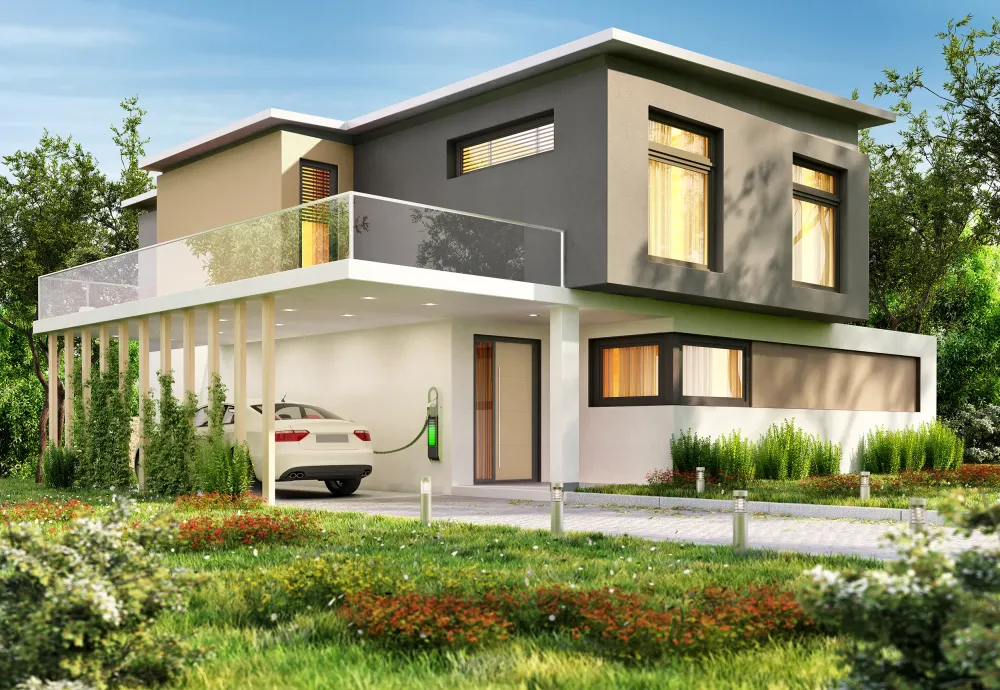The movement toward energy-efficient homes is not slowing down. In fact, as Americans become more intent on conservation and avoiding high energy bills, they look for more ways to be energy efficient in their homes – often focusing on wasted resources and inefficient systems.
How To Make Your Home More Energy Efficient
From energy-saving, efficient air conditioners and heaters to new windows, there are many ways to be more energy efficient – these are just a few that get you started.
1. Invest in an Energy-Efficient Heating and Air Conditioning System
We may be biased, but we think an energy-efficient heating and air conditioning system can drive substantial impact when working toward an energy-efficient home. The average American household spends about half of its utility budget on cooling and heating. Furnaces or boilers can lose as much as 50 percent of their energy through wasted fuel and heat loss through ductwork. Central air conditioning can also squander energy through ducts, and common window air conditioning units can lose up to 10 percent of their energy through drafty window seals.
Modern, energy-efficient air conditioning and heating systems such as ductless-split heat pumps, may require a bigger up-front investment, but they save money in the long run with lower energy bills. They provide targeted zone control and excellent air filtration, run quietly, and don't require ductwork, so it’s easy to add them where they are needed.
2. Replace Windows With Low-Emissivity (Low-E) Panes
According to the U.S. Department of Energy, low-emissivity (Low-E) windows can save enough money to replace an entire window every year. Low-E windows are coated with an incredibly thin layer (or layers) of metal. This filters out long energy wavelengths while allowing short energy wavelengths to pass through. That's just a fancy way of saying that Low-E windows trap heat inside but allow light to shine in just like any other window. Low-E coatings come in a wide range of materials and specifications for different uses and applications.
3. Attach Smart Meters for Water Control and Conservation
Water utilities in the United States are synonymous with crumbling infrastructure, outdated technology, inefficiency and billions of gallons of water wasted every year. Smart water meters can create a more energy-efficient house and shield homeowners from the inadequacies of their utility company by detecting leaks, identifying irregular water patterns, and helping manage household water usage. Smart meters can pick up price signals and tell homeowners the ideal time to take a shower or run the dishwasher. They can even plug in and relay important information back to the water company for more accurate usage data.
4. Install Energy-Efficient Led Lighting Throughout Your Home
Led lights are different from traditional light bulbs, which give off 90 percent of their energy as heat, because they use semiconductors to convert electricity into light. Formerly used mainly for industrial applications, such as in traffic lights, Led lighting is an established trend in energy-efficient homes. LEDs consume as little as 20 percent of the energy of traditional incandescent bulbs, yet they last up to 25 times longer.
5. Achieve an Energy Star Rating for the Entire Home
Energy Star has been synonymous with rigorous testing and selective endorsement for energy-consuming products since the Department of Energy and the Environmental Protection Agency created the standard in 1992. But a growing trend is to seek the coveted certification not just for a single appliance like a washing machine, but for an entire, energy-efficient house. Homebuilders who follow strict criteria for thermal enclosure, heating and cooling, water management, lighting and appliances may be eligible to have their entire home endorsed by Energy Star.
Takeaway
Breakthroughs in lighting, water technology, cooling, heating and windows are creating more energy-efficient homes worldwide. Many of these upgrades may require upfront investments, but the long-term savings in the form of reduced energy bills make these efforts worthwhile.









